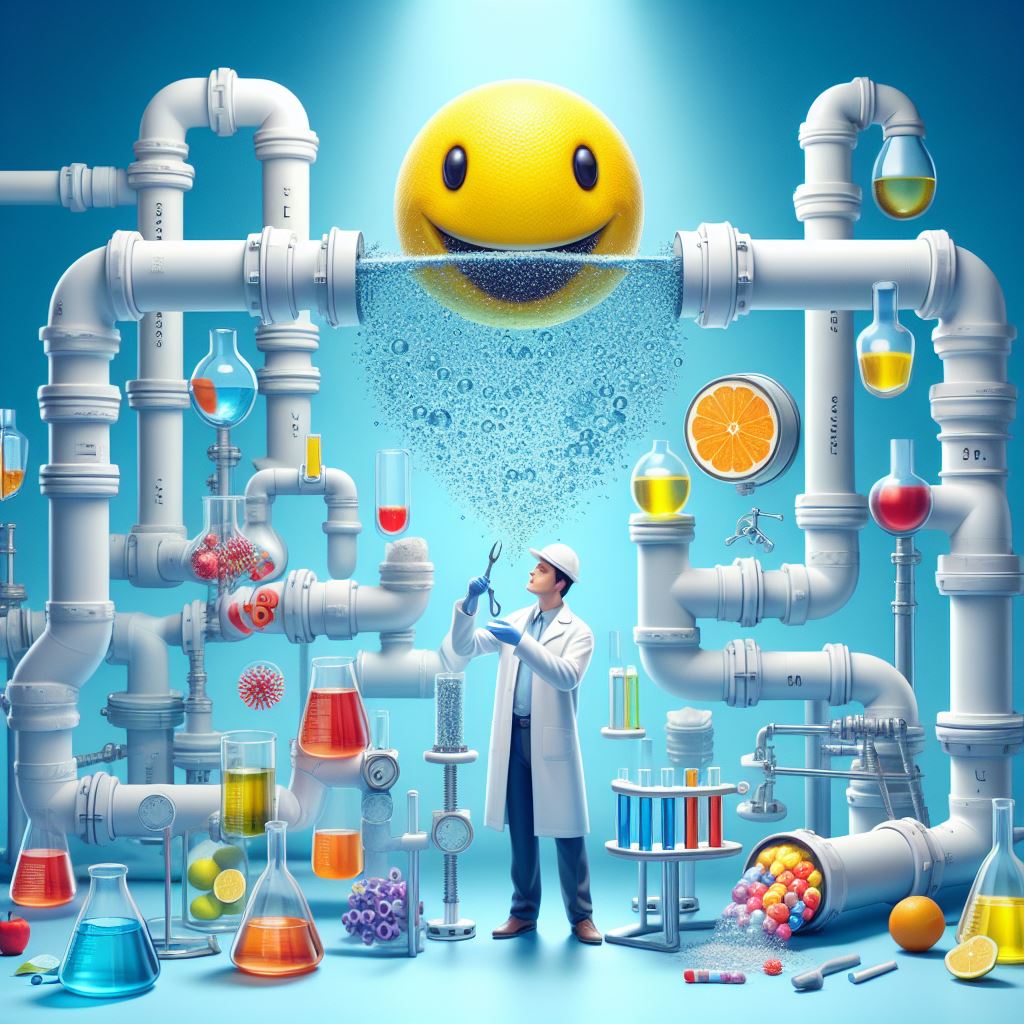Chlorine in PVC: For decades, PVC pipes have been the workhorse of plumbing systems, silently delivering clean water and efficiently carrying away waste. But have you ever wondered about the science behind their reliability? The answer lies in a key ingredient: chlorine.
This blog post dives deep into the world of PVC (polyvinyl chloride) and explores the role chlorine plays in making it the dependable material for our pipes. We’ll explore the chemistry, debunk myths, and understand how chlorine contributes to the exceptional performance of PVC pipes.
The Building Blocks of PVC: A Polymer Powerhouse
Imagine a long chain, with each link identical. This is essentially the structure of PVC, a polymer. The individual links, called monomers, consist of carbon, hydrogen, and chlorine atoms. Chlorine plays a crucial role in this structure. It provides stability, strength, and unique properties that wouldn’t be possible with just carbon and hydrogen.
The Power of Chlorine: More Than Just Strength
Chlorine’s impact on PVC goes beyond just making it strong. Here’s a breakdown of its contributions:
- Durability: Chlorine helps PVC pipes resist corrosion and degradation. This is especially important for underground pipes exposed to harsh chemicals in the soil.
- Heat Resistance: Thanks to chlorine, PVC pipes can withstand high temperatures without warping or melting. This makes them ideal for hot water lines.
- Lightweight: Despite its strength, PVC is surprisingly lightweight. This makes it easier to transport, install, and handle during construction projects.
- Leak-Proof Performance: The tight chemical bonds between chlorine and other elements in PVC create a smooth, non-porous surface. This minimizes the risk of leaks, ensuring a reliable water delivery system.
- Cost-Effectiveness: PVC production is a relatively simple process, making it an economical choice. This translates to affordable and long-lasting piping solutions.
Beyond Strength: Addressing Environmental Concerns

There have been concerns regarding the environmental impact of chlorine in PVC. However, advancements in production processes have significantly reduced these issues. Modern PVC manufacturing utilizes chlorine in a closed-loop system, minimizing emissions and ensuring responsible resource management. Additionally, PVC pipes are highly durable, requiring fewer replacements, thus reducing the overall environmental footprint.
The Science of Safety: Debunking Myths
Some misconceptions surround chlorine in PVC, particularly regarding its leaching into water. Independent research has shown that the amount of chlorine leaching from properly manufactured PVC pipes is minuscule and well below established safety standards set by regulatory bodies.
The Future of PVC Pipes: Innovation and Sustainability
The science behind chlorine in PVC continues to evolve. Manufacturers are constantly looking for ways to improve the sustainability of PVC production. This includes exploring the use of recycled materials and renewable energy sources in the manufacturing process.
Conclusion: Chlorine in PVC – A Reliable Partner
PVC pipes, with their core component – chlorine – have earned their place as a dependable solution for our plumbing needs. Understanding the science behind chlorine’s role in PVC allows us to appreciate the strength, durability, and cost-effectiveness of this essential material. As technology progresses, we can expect even more advancements in PVC production, ensuring a sustainable future for this reliable piping material.
This blog post provides a solid foundation for understanding chlorine in PVC. Here are some additional points to consider for a more comprehensive exploration:
- Types of PVC Pipes: Different types of PVC pipes exist, each formulated for specific applications. Delving into the variations, like chlorinated polyvinyl chloride (CPVC) used for hot water lines, can provide a deeper understanding.
- Manufacturing Process: A brief explanation of the PVC manufacturing process can be informative. This could include a simplified explanation of how chlorine is incorporated into the polyvinyl chloride structure.
- Regulations and Standards: Discussing the regulations and standards governing PVC production and usage can reassure readers about safety measures.
- Benefits Beyond Pipes: PVC’s applications extend far beyond pipes. Highlighting its use in medical devices, window frames, and building materials showcases its versatility.
- The Future of Chlorine Chemistry: Exploring advancements in chlorine chemistry related to polyvinyl chloride production can provide a glimpse into a more sustainable future.
Polyvinyl Styrene: The Secret Ingredient in Your Daily Life






